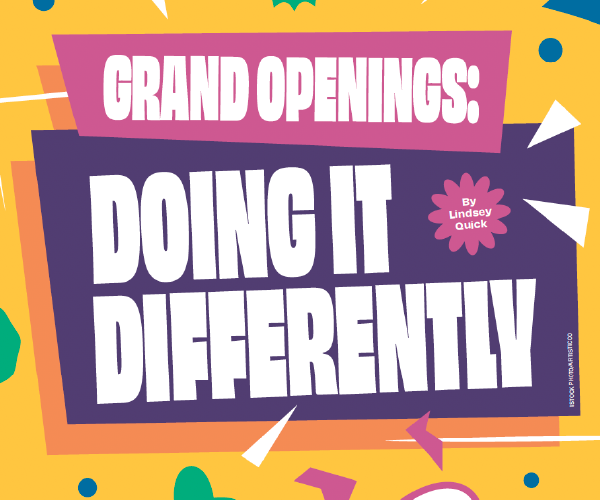
Practical Catalysts
July 1, 2012
6 minute ReadLooking for catalysts for innovating the next big thing at your company? This article shares five keys to maximizing profitability through uncovering and implementing big innovations. How well each of these are implemented at your company directly corresponds to the likelihood of your business achieving a breakthrough discovery that can grow your profitability.
1. LISTEN
Effective listening is a business fundamental often lost as the leadership of growing companies are increasingly distanced from front-line functions. Staying close to prospective buyers helps you keep your strategic objectives on target. As you let buyers slip further away from you, it becomes increasingly difficult to maintain relevance to them. You’ll often cling to what buyers wanted “back then” rather than evolve with what buyers want now.
This evolving distance is an extraordinarily common mistake fueled by ever-growing demands on an owner as his or her business grows. The owner wants to maintain leadership, so they choose to rise within their organization as employees are hired to cover lower roles they once owned. When you started your business you were probably CEO, CFO, CIO as well as receptionist, janitor and window washer. But the most important roles were the customer-facing functions such as sales and service, as those kept you intimately aware of what your customers wanted to buy, what was right and wrong with your offerings, and so on.
Some of the first hires made in growing businesses are often sales and service people. Soon, there is a complete separation between business owner and customers. When divining customer wants and needs for the near-term future, this facilitates greater opportunity for buyer input to get lost in translation. Those “middlemen” you’ve now inserted between you and your buyers may not be able to communicate the information you need to continue to effectively evolve your business.
Grow the company a little more and those sales and service people need a manager. Hire one and you are two layers removed from your buyers and prospects. The potential for losing intimate touch with buyer wants and needs increases with each layer. Avoiding this loss is one of the biggest justifications for trying to keep an organization chart as flat as possible.
There are three ways to resolve this strategic problem:
1. Return to front-line roles while handing the remaining duties to others to manage for you.
2. Make a habit of regularly plugging yourself back into those jobs closest to your customers.
3. Install intelligent channels through which you can again gather relevant intelligence directly from the sources of your sales.
2. CULTIVATE
Cultivate a variety of channels for internal staff — especially sales and customer service — to share innovations in non-threatening ways. This is about listening to the collective brilliance of your whole team instead of just those you consider peers or most key reports. You are in an extraordinarily unusual company if all great ideas to grow your business fluidly flow up through chain of command. Odds are much higher that many high-impact ideas are stuck in some low-level employee’s brain(s) waiting to be drawn out, or they are looking for a logical, safe channel through which they can be shared with you. Some ways to open those gates:
• Do you have a formal company idea program? Does it thoroughly reward implemented ideas? How many rewards were paid in 12 months? If you have a program but little-to-no money has been paid out in the last year, you don’t have a working program.
• Do you have a well-documented anonymous channel through which business growth ideas may flow? Some employees may be afraid to openly share their ideas for a variety of reasons. An anonymous channel is a way for that kind of employee to offer their brilliance. If you have a suggestion box but you hardly ever get any meaty suggestions, you need to try harder.
• If someone polled your lower-level employees on both of the above, would they be “top-of-mind” aware of these vehicles? Often the leaders believe the employees are well aware when, in fact, a fair portion of employees know little-to-nothing about such options.
• Are there at least quarterly brainstorming sessions with company personnel closest to customers (which is not senior management)? If not, why not? Do you genuinely believe that those closest to buyers have little-to-nothing to offer in terms of what your buyers may want?
3. INNOVATE
Innovate with a product (or service) development model that blends art and science — one that maximizes ROI potential while minimizing risk of failure and that gives equal focus to quality, market segment and product function.
An “all art” or “all science” approach to product development misses the potential ROI-boosting and/or risk-reduction opportunities of the other. An all-art approach might be summarized by an ego-maniacal belief that “we” know what customers want mostly in absence of actually asking customers what they want. It leans on magic, hope, luck, etc. Often it is a self-centric approach to product development. Our company has actually had clients say the tell-tale phrase: “I know what customers want better than they [the customers] know.” The mentality of the art-centric product developer is to develop a product to personal taste and then go try to find a market that wants it as they chose to serve it. Yes, that’s backwards of how it is supposed to be.
The all-science approach is a time-consuming model because great energy is expensed in quantifying product development at every stage. A science-heavy approach uses tools like surveys, buyer interviews, focus groups, testing, market (wants and needs) research, etc., prior to actually going to market. It is a risk-averse model aiming to minimize failures by thoroughly verifying market demand before much investment goes into development and monetization. The primary weaknesses in a science-heavy approach is the lack of agility and the greater opportunity for competitors to gain insights into potential new products before they go to market.
Which is best? An intelligent blend catering to your particular market is the answer. Some of the art elements mixed with some of the science balances risk and reward potential. You get to market sooner but you don’t make each launch a complete gamble. You verify and validate to some degree but not so much that you make it possible for your competition to beat you to market.
4. PLUG-IN
Leverage a website that develops rich one-to-one profiles of each user’s interests. Among all of the promise of what your website can be, many companies don’t think about it as a key research tool. Using it as such can be lucrative as it offers an excellent way to gather prospect and customer intelligence directly from them. It can provide both qualitative and quantitative input to a multitude of strategic and tactical questions in real-time. Accumulations of such information can help the leaders of your company make customer-driven decisions.
Your website can be so much more than just another way to pitch and sell your offerings. It can be the ultimate, low-cost tool to help you get closer to the lifeblood of your business. Companies like Google, Ebay and Amazon are big-name leaders in leveraging their websites in this way. The fundamental technologies are not complicated; it’s all a matter of bridging the classic gap between marketing and your IT resources. In very simple terms: what is everything your business people wish they could know about your prospects and buyers if they could interview each of them? Now, how much of that can you get by evolving your website to capture that kind of information?
5. EFFICIENCY
Efficiently streamline your operations. Contrary to typical business behaviors, it is always time to streamline your operations. Business moves much too fast in an environment far too dynamic to allow any company to ever believe that its operations are near maximum efficiency. Waiting until there is a big profit downturn to streamline is like waiting until you hit 500 pounds before choosing to diet and exercise. Bloat is always accumulating and needs attention — not just when your company is in the downswing of a business a cycle.
A practical key is not assigning the same people to this task each time. Fresh minds can see the problems and opportunities in new ways. Similarly, be sure the review team is made up of people at all levels of your org chart — not just the top.
Among monetary benefits, fluid operations free up the time and resources so that you can give some focus to the future, rather than continuous “panic scrambles” in the present. When there are little-to-no fat-draining resources, there will be time and energy for smarter planning and new innovation.








